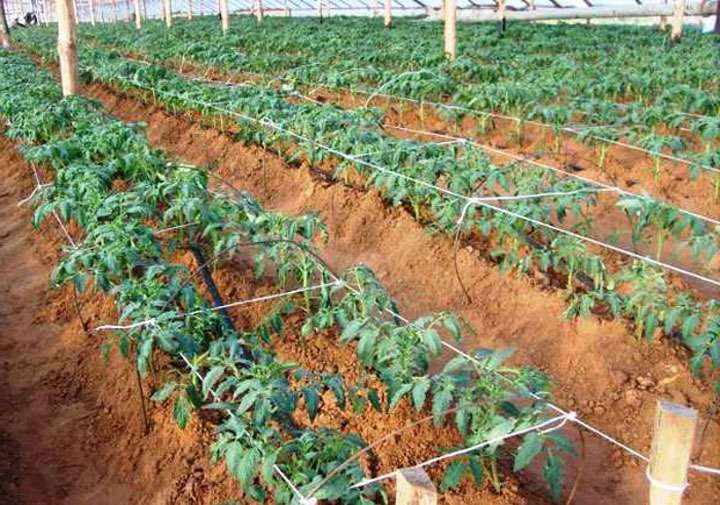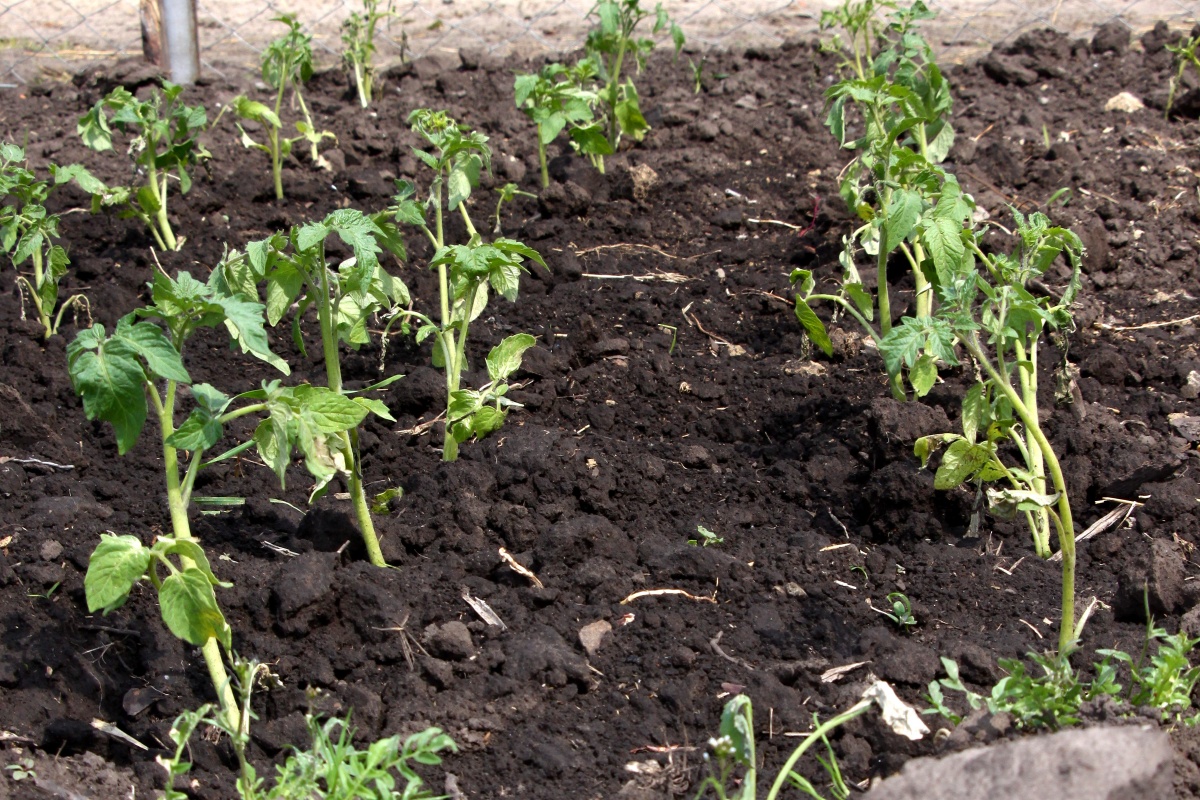How and when to huddle tomatoes after planting in the ground
Why spud
Recently, the opinions of summer residents were divided. Some argue that hilling is a completely unnecessary procedure that takes only time and energy. Others believe that hilling vegetables has many benefits.  So, first of all, let's figure out what this procedure is for:
So, first of all, let's figure out what this procedure is for:
- hilling enriches the soil with oxygen;
- strengthens the root system and plant stem;
- promotes the growth of additional roots;
- has a beneficial effect on the nutrition of the fruit;
- after the procedure, small furrows appear in the ground between the mounds, in which moisture will accumulate.
If you are still in doubt whether you need to huddle the plants, then just look at the tomatoes. If you notice the appearance of adventitious roots, then, without any doubt, hilling in this case is a necessary procedure.
After all, vegetables need additional nutrition. If the roots in the form of tubercles are absent, then you can easily do without hilling. Moreover, in some cases, this procedure can also harm tomatoes. After all, if you carry it out incorrectly, then the air will not be able to penetrate to the roots. Therefore, if you have planted seedlings very deeply in the ground, then you should not huddle the bushes. After all, the root system of plants will already be perfectly developed.
But it is still important to emphasize that if you hilling after the lower stepsons have already appeared, then their stems can give their own roots, which can develop as independent plants. Therefore, you can get a large number of bushes, and as a result - a rich harvest. Indeed, the formula is quite simple: the stronger the plant, the more fruit it will bear.
Hilling can increase the flow of minerals to plants from the soil. Tomatoes need microelements not only during the flowering period, but also during the ripening of the fruits themselves. After all, many are surprised why the plant sheds fruits that have already set. And the reason for this is precisely the lack of trace elements.
In addition, many gardeners recommend spilling low-growing tomatoes without fail. Then the plants will be more resilient, so you don't have to tie them up. It is clear that regular watering, weeding, as well as loosening the beds are those activities without which it is simply impossible to achieve a good harvest. Therefore, they must be carried out. But as for hilling after planting in the ground, then you only need to decide: vegetables need this procedure, or they can do just fine without it.
Timing and frequency
When should you spud tomatoes? The first time the procedure must be done within 10-11 days after you have planted the seedlings in the ground. After all, it is by this moment that the plants will have time to take root and "pimples" will already be clearly visible on the stem. These are the rudiments that vegetables need for good development.If we spud the tomatoes before they appear on the stem, we can harm the plant, because the deep roots will be left without air. Therefore, there is no need to rush with this matter. After all, the answer to the question "when should you spud tomatoes?" cannot be unambiguous. You just need to closely monitor the condition of the stems.
Don't forget to water the tomatoes before hilling. This is important, because if you huddle with dry soil, then the formation of additional roots will occur slowly. The next time you need to huddle the plants in twenty days. Pay attention to the stem again - if its bottom turns blue, then this is the first sign that an additional root system is developing. Two procedures will be enough.
How to do it right
In order to huddle tomatoes, we will need a hoe or small trident rakes. This must be done very carefully, because the roots of the plants must remain intact and also unharmed. Note that in doing so, we slightly loosen the soil, providing the root system with additional air flow. First, you should pour the earth on one side of the bush, and then on the other.
See what you got? Hillocks have formed near the stems, and furrows in the aisles, in which water for tomatoes will accumulate. The hilling height depends on the type of soil. For example, if you are growing them in heavy loamy soil, then the hilling should be high. Then you do not have to tie the plants to stakes, they will grow well on piles. If vegetables are planted on sandy loam soils, then it makes no sense to carry out high hilling. If you want tomatoes to please you with a really good harvest, you can also add humus soil.
At the end of the procedure, do not forget to shake off the soil that has fallen on the leaves. You need to sprinkle tomatoes at least twice. It is good if this happens simultaneously with loosening. This way you can save time and energy. If you want to become a true expert in growing tomatoes, then you need to remember one rule: tomatoes need to be watered often, but in moderation. Watering before hilling should be mandatory.
So, you now know when and how to properly huddle plants after planting in the ground. And by giving your vegetables a high level of care, you will soon be able to boast a decent harvest.
Video "Hilling tomatoes"
Look at the notes for how to huddle and pinch tomatoes.

